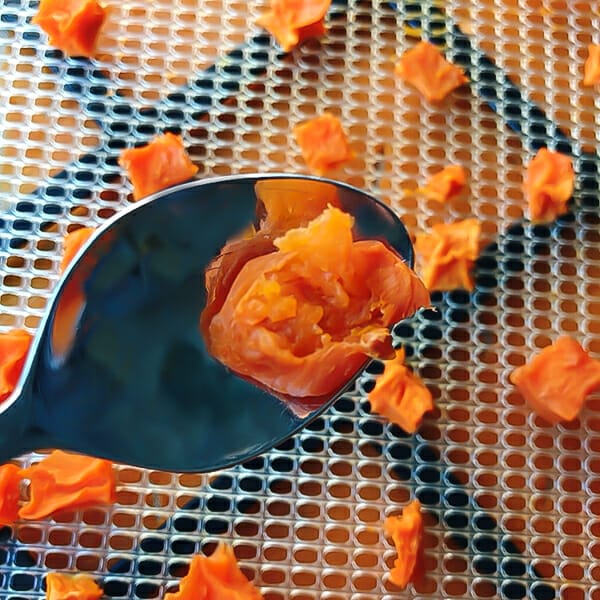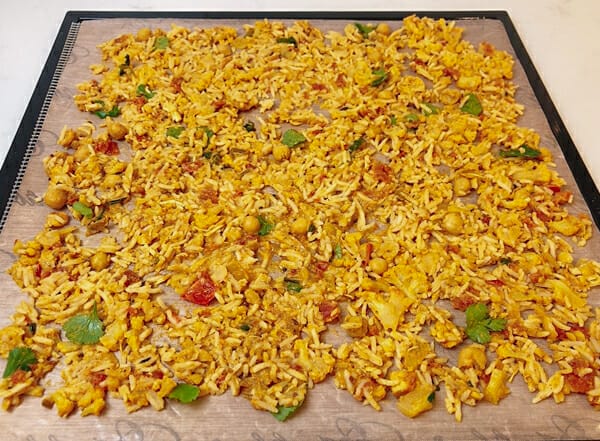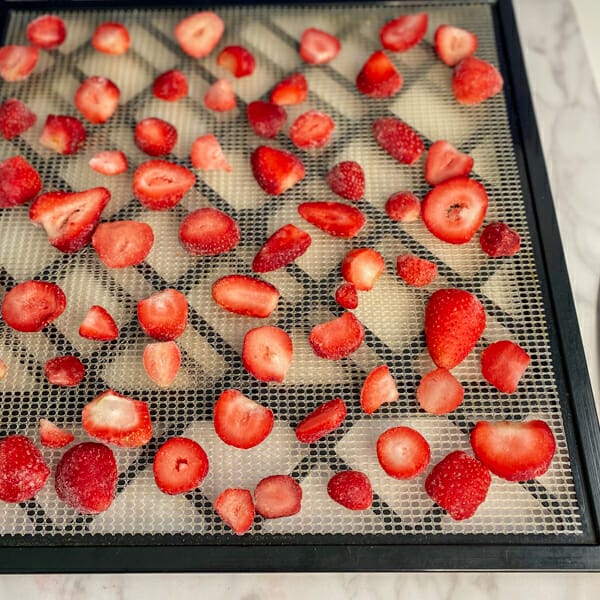Recommended Temperatures for Dehydrating Different Foods
Use recommended temperatures for dehydrating different foods to ensure your dried food is safe. Do not be tempted to turn up the heat to speed up drying times. Higher temperatures will cause the outside layer of food to harden. This can cause moisture to be trapped on the inside of the food which could eventually lead to mold and spoiled food. This phenomenon is called “case hardening” and has led to disappointing food loss for many people.

Also Read: Top Tips for Dehydrating Food, How to Store Dehydrated Food, Checking Dryness of Fruit Leather
Recommended Temperatures for Dehydrating Food
The following are specific temperatures recommended for different foods. If ever in doubt, the National Center for Home Food Preservation recommends food be dried at 140°F or 60°C. It does not recommend drying eggs or dairy products at home.
Even if you dry food at a specific temperature, drying times can still vary greatly depending on the dehydrator, thickness of food, air humidity, amount of food in the dehydrator, air flow, room temperature, etc. Recipes provide general guidelines, but it is best to check food regularly rather than relying on a set time.
What Temperature for Prepared Meals & Leftovers?
If you are dehydrating whole meals or leftovers, cut food pieces to relatively equal size pieces and dry at 135°F/57°C.
Expect it to take 8-10 hours. Check on it at 6 hours and break up any clumps as it’s drying.

What If My Dehydrator Doesn’t Have Temperature Control?
If your dehydrator does not offer temperature control, it is likely set somewhere between 125-165°F. Check your food more frequently than recommended and rotate your trays to ensure even drying.
You could also test what temperature your dehydrator is drying at, by checking the temperature as follows.
- Plug in your dehydrator, let it run for 15 minutes and then put in a thermometer. Let it run for 5 minutes, then read the temperature. This will give you a general idea of what temperature your dehydrator runs at. You can adjust your timing accordingly.
Note: The air temperature inside your dehydrator will always be higher than the temperature of the food. So if your test shows your dehydrator is running up to 10 degrees warmer, don’t be alarmed. Just keep checking your food – inside and outside.

What are your favourite foods to dehydrate and how do you use them? I love getting reader’s questions and comments, please leave a comment below or tag me on Instagram @getgettys and Facebook @GettyStewart.HomeEconomist.



